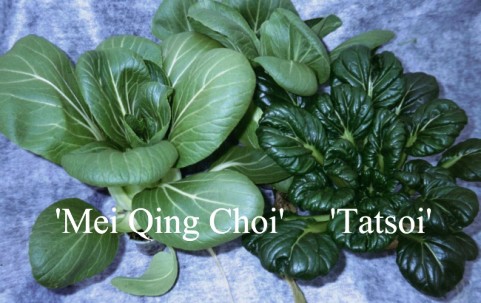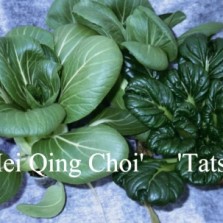
QUESTION: Please give me some information about Chinese cabbage. I am considering planting it here. JG
JORDI: Chinese cabbage is a cool season vegetable which means it should be grown here from fall to early spring. It grows best with short days and moderate to cool temperatures (60 to 70°F). Direct seeding is possible, especially for the fall, in loamy to sandy soil. It is critical to keep the soil moist during seedling establishment. It is also desirable to have an area protected from the wind when seeding cabbage. Although cultivars will vary in their response to temperature, they can bolt or form seed stalks when the temperature falls below 60°F and injury can occur during severe freezes. It is best to prevent this from happening as it may cause the cabbage leaves to become bitter.
Most Chinese cabbage is harvested by cutting the entire plant just above the soil line. Old, ragged, and decayed outside leaves should be removed. The heads or entire plants are then ready for washing, using, or storage. Chinese cabbage is a fairly new vegetable to the United States since we have been planting it for only the last 100 years.
There are two common types of Chinese cabbages called the Pekinensis (pe-tsai) group or the Chinensis (bok choy or pak choi) group. Pekinensis contains celery cabbage, Chinese white cabbage, Peking cabbage, pe-tsai, won bok, napa or nappa (Japanese), hakusai (Japanese), pao, hsin pei tsai (Mandarin), bow sum and bok choi (Cantonese). The Chinensis group contains celery mustard, pe-tsai (Mandarin), pak choi (Cantonese), chongee (Japanese), and Japanese white celery mustard. Chinese cabbage can be sautéed, chopped, stirred fried and even eaten raw. The shape of the cabbages varies widely as does the taste. The Chinese and Japanese have been working on breeding programs for generations and we can take advantage of their hard work. Read this publication from the University of Florida containing specific cultivars of each of these groups – please refer to it for the best choices to plant in our area.
QUESTION: You have borage listed as one the herbs to be grown in November. Please tell me more about this plant. TS

Borage originated in the Middle East and according to legend considered a sign of bravery. Ancient Celtic warriors supposedly drank wine flavored with borage before battle to make them courageous. Herbalists have suggested this herb can provide us with an inner calm and the Roman scholar Pliny considered it to be an antidepressant. Apparently, the flavor is similar to fresh cucumber, although I have never tasted it.

Nassau County Extension Director
Environmental Horticulture
543350 U. S. Highway #1
Callahan, Florida 32011
